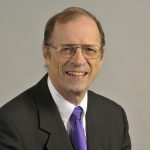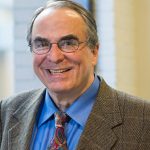 Congratulations to the 2021 Leo Hendrik Baekeland Award Winner!
Congratulations to the 2021 Leo Hendrik Baekeland Award Winner!
Prof. Prashant K. Jain
Professor of Chemistry and Alumni Scholar, University of Illinois at Urbana-Champaign
The 2021 Leo Hendrik Baekeland Award goes to Prof. Prashant K. Jain from the University of Illinois at Urbana-Champaign for his contribution to the field of materials science. Dr. Jain’s research has made impressive contributions to our understanding, on an atomic scale, of light-matter interactions, chemical transformation in nature and technology, and the inner workings of metal catalysts and photocatalysts.
2021 Baekeland Symposium

- Date: Thursday, May 12, 2022
- Time: 1:00 PM
- Place: Fairleigh Dickinson University [ official campus directions ]
- Contact: Qi Gao qgao@njacs.org or qi.gao1@merck.com
- Flyer
Getting there: The symposium takes place on the Florham Campus of Fairleigh Dickinson University. Although the campus has an entrance from Madison NJ, if you are driving you should use the entrance at 175 Park Ave, Florham Park NJ 07932. The meeting room is Lenfel Hall, which is located in one of the main buildings on campus, called Hennessy Hall, or “The Mansion”. Navigating the campus is tricky, but Google Maps knows some locations and roads on the campus, so this link gets you to the front of Hennessy Hall:
http://maps.google.com/?q=Hennessy+Hall,Mansion+Mall,+Florham+Park,NJ.
As usual with Google Maps, you can click the “Directions” link to the left of the map to get turn-by-turn directions.
But we are asked to use Parking Lots 2 and 8. The following link takes you straight to both lots. When you reach the end of the route, turn left for Parking Lot 2 (which is larger), or right for Parking Lot 8 (which is a little closer):
https://www.google.com/maps/dir//40.7785887,-74.4350543/@40.7783301,-74.4350862,212m
This [ annotated campus map ] will help you locate Parking Lots 2 & 8 and how to walk from the parking lots to Hennessy Hall. As you drive onto campus you’ll stop at a guard house, and they can help with directions, as well. For planning purposes, please note that it’s a 9 minute walk from the parking lots to The Mansion. If you need handicap parking, ask at the guard house.
Note: This “2021” Symposium was postponed into 2022 due to the pandemic shutdown.
Invited Speakers
- George Schatz
- Robert W Field
- Paul Weiss
- Naomi Halas
Program Agenda
- 1:00 – Registration
- 1:30 – Welcome Address – Dr Qi Gao, Baekeland Symposium Chair
- 1:40 – 1. Professor George Schatz,
Charles E. and Emma H. Morrison Professor of Chemistry and Chemical and Biological Engineering Northwestern University
Nanoparticles, Plasmons and Theory - 2:20 – 2. Robert W Field
Prof. Chemistry, Post-Tenure, MIT
Broken Patterns of Broken Patterns - 3:00 – 3. Professor Paul Weiss,
UC Presidential Chair Distinguished Professor of Chemistry and Biochemistry, Bioengineering Distinguished Professor of Materials Science, University of California, Los Angeles
Plasmonic Approaches to Biology and Medicine - 3:40 – Break / Refreshments
- 4:10 – 4. Professor Naomi Halas,
Stanley C. Moore Professor in Electrical & Computer Engineering and Professor of Biomedical Engineering, Chemistry, Physics & Astronomy, Rice University
Nanomaterials and Light for Sustainability and Societal Impact - 4:50 – Remarks and Baekeland Award Presentation
Natalie LaFranzo, ACS Director at Large
Dr. Qi Gao, NJ-ACS Section Chair - 5:00 – Keynote: Professor Prashant Jain
The Photification of Chemical Manufacturing - 5:50 – Closing remarks Mrs. Diane Krone, NJ-ACS Awards Chair
Abstracts
KEYNOTE: Prashant K. Jain, PhD
Abstract: The interaction of light with molecules can be used to access new modes of chemical reactivity; however, this interaction is often difficult to exploit in a universal manner. I will describe an emerging paradigm that is proving to be a general strategy for interfacing photons with molecules and activating chemistry. This strategy involves plasmonic nanoparticles, which absorb visible light and concentrate it down to the nanoscale in the form of electronic excitations. I will describe how plasmonic nanoparticles are allowing light to be used as a redox equivalent in chemical reactions, for driving non-equilibrium chemical processes, for modifying the intrinsic catalytic activity and selectivity of transition metals, for the photosynthesis of fuels, and for boosting electrochemical conversions. I will share a vision of a future where chemical manufacturing is powered by light without harsh conditions, fossil energy, or large reactors. This is after all how nature practices chemistry.
George Schatz, PhD
Abstract: Silver and gold nanoparticles have a history that dates to the Roman empire and before, as well as detailed work by Michael Faraday in the 1850s. However these particles have been given new life (and applications) in the last 40 years through a number of advances in nanoscience, especially concerning their plasmonic (collective electronic excitations) optical properties. This talk will provide an overview of these advances, including their use in sensing applications, and to plasmon-driven chemistry. An emphasis in this talk will be on the use of theory to understand the optical properties of plasmonic materials, including both electronic structure theory and electromagnetics, and the dependence of plasmons on nanoparticle size, shape and arrangement, and the coupling of plasmons to nearby molecules.
Robert W. Field
Abstract: To Appear
Paul Weiss, PhD
Abstract: Biology functions at the nanoscale. Thus, there are special opportunities not only to make biological measurements using nanotechnology, but also to interact directly in order to influence biological outcomes. I describe how we fabricate and use plasmonic and other nanostructures to advance high-throughput gene editing for cellular therapies and in the selective capture, probing, and release of single circulating tumor cells in liquid biopsies.
Naomi Halas, PhD
Abstract: Metallic nanoparticles are a central tool in the nanoscale manipulation of light. When illuminated, they undergo coherent oscillations of their conduction electrons- known as plasmons- which are responsible for their vivid colors and their strong light-matter interactions. Metallic “plasmonic” nanoparticles can give rise to strong photothermal heating effects, which are being used in applications ranging from cancer treatment to solar thermal desalination. While the scientific foundation of this field has been built on the coinage metals, more recently we have realized that Aluminum, the most abundant metal on our planet’s surface, also exhibits the same strong optical properties as far more precious metals. Coupling a plasmonic nanoparticle directly to catalytic nanoparticles transforms catalysts into photocatalysts, capable of driving chemical reactions under surprisingly mild, low temperature conditions. This new type of catalyst is utilized for remediating greenhouse gases, and converting them to useful chemicals.
Speakers’ Bios
Keynote: Prashant K. Jain, PhD
Prashant K. Jain, PhD, grew up in Bombay, where he completed his undergraduate education. He obtained his PhD working with M. A. El-Sayed at Georgia Tech, following which he was a postdoctoral fellow at Harvard. After a Miller Fellowship at UC Berkeley, he joined the faculty of the University of Illinois at Urbana-Champaign, where he is a Professor in the Department of Chemistry, Materials Research Laboratory, and the Beckman Institute. He is also an Alumni Research Scholar and an Affiliate Faculty Member of Physics and the Illinois Quantum Information Science and Technology (IQUIST). His research webpage can be found at https://nanogold.org.
Prof Jain’s lab specializes in nanoscale light–matter interactions and nanoscale-spatial-resolution chemical imaging. His noteworthy recent contributions are the co-discoveries of plasmon resonances in doped nanocrystals and plasmonic redox catalysis and photosynthesis. His collective work has been published in over 100 papers and cited over 27,000 times. He has been listed among Highly Cited Researchers by Clarivate Analytics and Elsevier Scopus. Prashant is a Fellow of the Royal Society of Chemistry and the American Association for the Advancement of Science (AAAS). His work has been recognized, among other awards, by a Presidential Early Career Award in Science and Engineering, the ACS Kavli Emerging Leader in Chemistry award, the Beilby medal, a Sloan Fellowship, an NSF CAREER award, and selection as MIT TR35 inventor.
George Schatz, PhD
George C. Schatz is Charles E. and Emma H. Morrison Professor of Chemistry at Northwestern University. He received his undergraduate degree in chemistry at Clarkson University and a Ph. D at Caltech. He was a postdoc at MIT, and has been at Northwestern since 1976. Schatz is a theoretician who studies the optical, structural and thermal properties of nanomaterials, including plasmonic nanoparticles, plasmonic metamaterials, DNA and peptide nanostructures, and carbon-based materials. He has contributed to theories of dynamical processes, including gas phase and gas/surface reactions, energy transfer processes, transport phenomena and photochemistry. Schatz has published four books and over 1100 papers. Schatz is a member of the National Academy of Sciences, and the American Academy of Arts and Sciences. He has received numerous awards, including the Debye and Langmuir Awards of the ACS, and the Bourke and Boys-Rahman Award of the Royal Society of Chemistry. He is a Fellow of the American Physical Society, the Royal Society of Chemistry, the American Chemical Society and of the AAAS.
Nobert W. Field, PhD
To Appear
Paul Weiss, PhD
Paul S. Weiss graduated from MIT with S.B. and S.M. degrees in chemistry in 1980 and from the University of California at Berkeley with a Ph.D. in chemistry in 1986. He is a nanoscientist and holds a UC Presidential Chair and is a distinguished professor of chemistry & biochemistry, bioengineering, and materials science & engineering at UCLA, where he was previously director of the California NanoSystems Institute. He also currently holds visiting appointments at Harvard’s Wyss Institute and several universities in Australia, China, India, and South Korea. He studies the ultimate limits of miniaturization, developing and applying new tools and methods for atomic-resolution and spectroscopic imaging and patterning of chemical functionality. He and his group apply these advances in other areas including neuroscience, microbiome studies, tissue engineering, and high-throughput gene editing. He led, coauthored, and published the technology roadmaps for the BRAIN Initiative and the U.S. Microbiome Initiative. He was the founding editor-in-chief of ACS Nano and served in that role from 2007–2021. He has won a number of awards in science, engineering, teaching, publishing, and communications. He is a fellow of the American Academy of Arts and Sciences, American Association for the Advancement of Science, American Chemical Society, American Institute for Medical and Biological Engineering, American Physical Society, American Vacuum Society, Canadian Academy of Engineering, IEEE, Materials Research Society, and an honorary fellow of the Chinese Chemical Society and Chemical Research Society of India.
Naomi Halas, PhD
To Appear
 Congratulations to the 2021 Leo Hendrik Baekeland Award Winner!
Congratulations to the 2021 Leo Hendrik Baekeland Award Winner!



